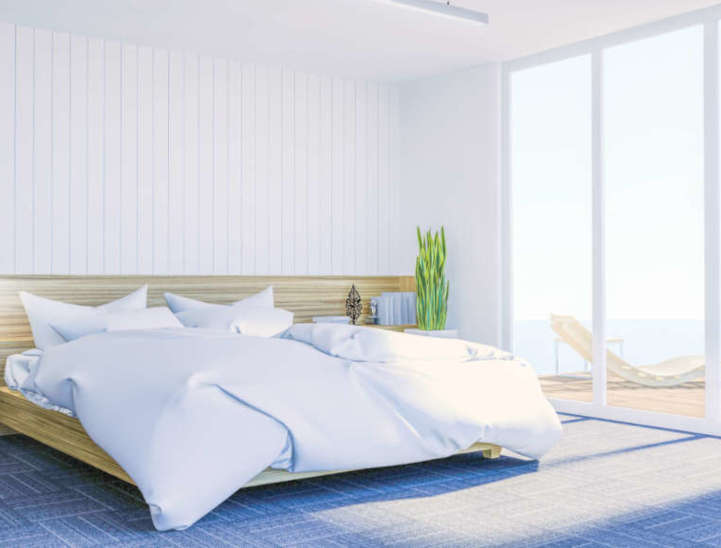
Minimalist rooms
We went to dinner over 10 years ago at a friend’s house, a luxury villa valued at a large million pounds, and after all this time I don’t remember a single detail, but I never forgot their room, furnished with just a bed. In other times and in a different social stratum, such frugality could suggest financial difficulties, but in this case it was a deliberate choice.
I confess that I was impressed with the serenity and peace that that room conveyed and since then my approach to decorating rooms has followed suit: I invest in the bed and add as little as possible, avoiding furniture, mirrors and billets of any kind.
My preference is always to install the wardrobe in an unoccupied room, whose function is now that of a walk-in closet. (Walk-in closets in the bedroom don’t particularly please me). But as it is impossible to transfer the closet to another room, I advise that it be made of the best quality wood and that it be used only for clothes. Then I equip it with bamboo crosspieces, a simple detail that makes the difference, and I avoid using scented sachets.
This approach turned out to be right; a recent study by Good Morning Britain and the University of Porthsmouth found that the amount of microplastic in homes, particularly in children’s bedrooms, is not only very high but much higher than estimated, with the main culprits being carpets, furniture, toys and clothes made of nylon and polyester.
Tip 8: Consider getting rid of unnecessary items in bedrooms
Families Inhale 7,000 Microplastic Particles At Home Every Day, Reveals Study (forbes.com)

